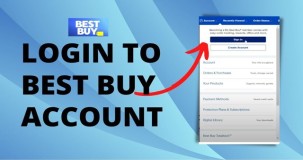 Best Credit Cards
Best Credit Cards
 Credit Report
Credit Report
 Credit Report
Credit Report
 Insurance
Insurance
 IT Services
IT Services
 Car Insurance
Car Insurance
 Best Credit Cards
Best Credit Cards
 Car Insurance
Car Insurance
 Credit Report
Credit Report
How is email campaign done? Learn how email campaigns are executed and optimized for success. Discover the steps involved in planning, creating, and implementing an effective email marketing strategy. Maximize engagement and conversion rates.
An email campaign is a marketing strategy that involves sending a series of planned and targeted emails to a specific group of individuals with the goal of promoting a product, service, or brand.
2. How do you build an email campaign?To build an email campaign, you need to follow these steps: - Define your objectives and target audience. - Choose an email marketing platform. - Create a compelling email template. - Segment your email list based on demographics or behaviors. - Develop a series of engaging and relevant email content. - Set up a schedule and frequency for your emails. - Monitor and analyze the results to make necessary improvements.
3. What are the benefits of running an email campaign?Running an email campaign can offer several benefits, including: - Cost-effectiveness compared to traditional marketing methods. - Directly reaching your target audience. - Building and maintaining relationships with customers. - Increasing brand awareness and customer loyalty. - Driving traffic to your website or landing page. - Generating leads and boosting conversions.
4. How can you measure the success of an email campaign?You can measure the success of an email campaign by tracking key metrics such as: - Open rate: the percentage of recipients who opened your email. - Click-through rate (CTR): the percentage of recipients who clicked on a link or call-to-action within your email. - Conversion rate: the percentage of recipients who completed a desired action after clicking through your email. - Bounce rate: the percentage of emails that were not successfully delivered to recipients. - Unsubscribe rate: the percentage of recipients who opted out of future emails. - Return on investment (ROI): the measure of the overall profitability of your email campaign.
5. What are some best practices for a successful email campaign?To ensure a successful email campaign, consider these best practices: - Personalize your emails with the recipient's name and other relevant information. - Use a compelling subject line to grab attention. - Keep your emails concise and easy to read. - Use visuals, such as images or videos, to enhance engagement. - Include a clear call-to-action with a sense of urgency. - Optimize your emails for mobile devices. - Test your emails across different email clients and devices. - Regularly clean and update your email list. - Comply with email marketing regulations, including obtaining permission from recipients and providing an unsubscribe option.
 LATEST ARTICLES
LATEST ARTICLES

Do rental cars come with liability insurance Texas?

Do you get cheaper insurance if you call?

Do most people in Florida have flood insurance?

Is it better to own an Allstate or State Farm?

Is it better to have 80% or 100% coinsurance?

Is home insurance the same as property insurance?

How do I link an email to dynamics?

Is Medicare more expensive than Obamacare?

Is HSA or FSA use it or lose it?

Does credit one bank report to Equifax?

Does disputing a collection restart the clock?

Does closing a secured credit card hurt your score?

How do I pay my Best Buy account?

How do I lower my APR rate?

How do I make a balance transfer offer?

What are the challenges of being an insurance agent?

What are the pros and cons of paying off a loan quicker?

What are the 5 key challenges facing the insurance industry?
 POPULAR ARTICLES
POPULAR ARTICLES

Do rental cars come with liability insurance Texas?

Do you get cheaper insurance if you call?

Do most people in Florida have flood insurance?

Is it better to own an Allstate or State Farm?

Is it better to have 80% or 100% coinsurance?

Is home insurance the same as property insurance?

How do I link an email to dynamics?

Is Medicare more expensive than Obamacare?

Is HSA or FSA use it or lose it?

Does credit one bank report to Equifax?